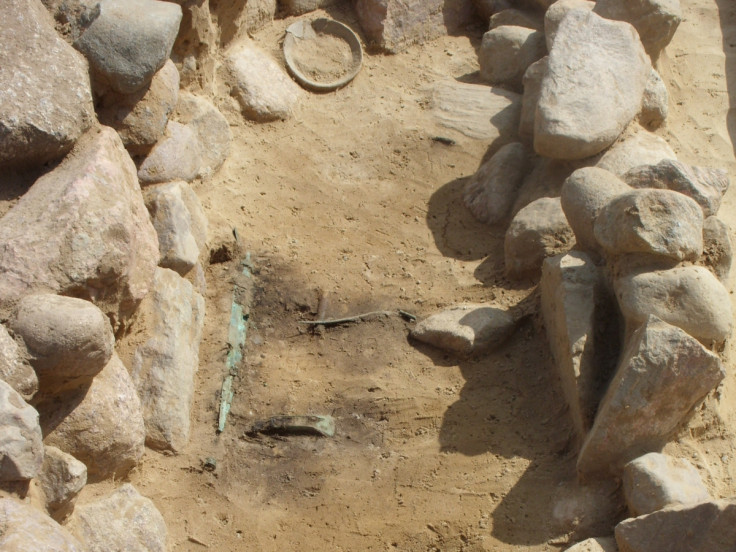Poland: 3,600-year-old cemetery reveals life of Tumulus warrior community

In one of the oldest burial grounds found on Polish soil, archaeologists are investigating how a community of elite warriors lived, from 3,600 years ago and throughout the Bronze Age. It all started in 2008, when the team began extensive research work on a site in Gorzyca, western Poland. Their goal was to rescue archaeological artefacts before an important construction project could be approved.
What the archaeologists found exceeded their expectations. They came across an abandoned cemetery, with tombs dating from before and during the Bronze Age. They believe it contains the graves of nomadic warriors belonging to the Tumulus culture, which dominated central Europe at the time. As the name indicates, Tumulus people were distinctive because they buried their deceased beneath burial mounds, or "tumuli".
Most important necropolis

Over two years, the archaeologists searched the grounds and excavated 35 of the graves, lined up with little stones, as well as so-called "houses of the dead", structures built to resemble a home, and made of stones and wood.
Indepth analysis reveal that they belonged to Tumulus "military aristocracy", in other words, to groups of elite warriors and their families. Up to seven generations may have been laid to rest in these tombs, making it one of the most important necropolis of the period ever found in the region. In fact, until the discovery, very few cemeteries associated with the Tumulus culture were known to exist in the area.
"The cemetery is unique not only because of the number of burials. We have also noted a wide variety of forms of grave construction, which may indicate the social status of the dead buried in these graves", explains Krzysztof Socha, an archaeologist who led the project.
Oldest sword in Poland
After eight years, the archaeologists are now well into their analysis of the contents of the tombs. They have already discovered many antique treasures, which confirm both the high social status of the deceased, and the uniqueness of the site.

Amongst the precious relics discovered, the archaeologists came across the oldest sword ever found on Polish territory. A number of ancient daggers, axes and a variety of bronze objects, typical of the period, were also recovered from beneath the earth.
The objects hint at precious clues of what life was like for the Tumulus warrior community, and reveal how central war was to their culture. More investigations will be carried out, before the end of the year, when the archaeologists hope to publish a review explaining what function each objects performed in the context of the Tumulus culture.
Research in life and death
Planned research include analysis of bone material and carbon from the graves, in order to uncover the secrets behind burial rituals and practices that took place on the site. The researchers say it will also help them understand how the cemetery worked, and how it was organised.
While understanding how the ancient culture honoured its dead is crucial to archaeologists, they will now also explore what Tumulus warriors' daily lives looked like. They will also have a closer look at the bronze objects and pottery fragments found in some of the tombs.
More importantly, the concluding part of the project will involve the archaeologists collaborating with other scientists to create a complete reconstruction of the original landscape, thanks to geological and geomorphological research on the site's immediate surroundings. An experience which will take them on a journey into the past, to give them another perspective of the world as it was 3,600 years ago.
© Copyright IBTimes 2025. All rights reserved.






















